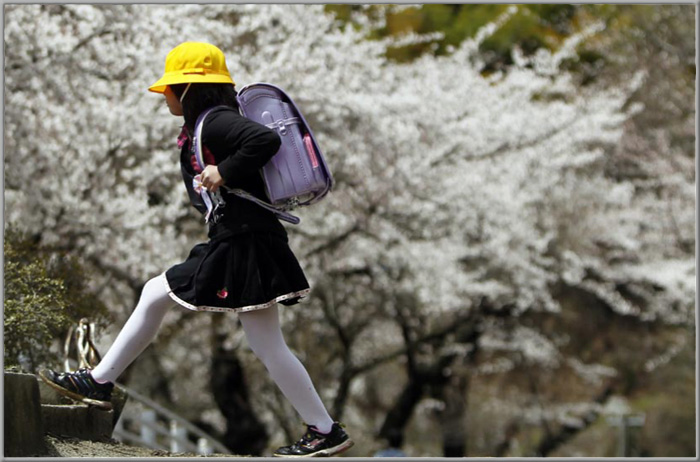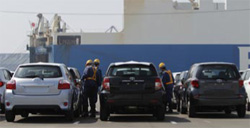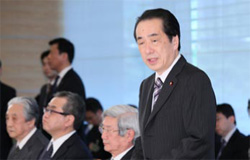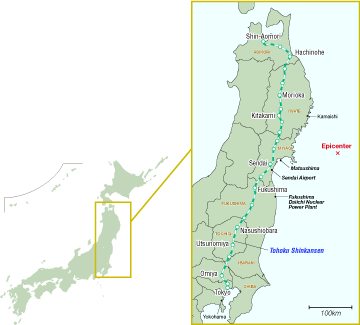Home > Highlighting JAPAN > Highlighting Japan MAY 2011 > The Road to Recovery
Highlighting JAPAN
COVER STORY: The Road to Recovery
Caption: A new pupil walks in front of cherry blossoms in full bloom after an entrance ceremony at Kamaishi Elementary School in Kamaishi, Iwate Prefecture, April 20.
The Road to Recovery

Workers prepare to drive new Toyota cars onto a cargo ship at Sendai Port, Miyagi prefecture, April 16.
Credit: REUTERS/AFLO

Prime Minister Naoto Kan delivers an address at the first meeting of the Reconstruction Design Council in Response to the Great East Japan Earthquake, April 14.
The recovery at tourist spots that were damaged by the tsunami and earthquake is proceeding as well, with preparations being made for accepting visitors. Among those recovering is the tourist area of Matsushima in Miyagi Prefecture, with the 260 islands of various sizes in Matsushima Bay making it one of Japan's most notable natural scenic spots. The tsunami struck Matsushima too, flooding its shopping district and roads. But because of the buffering effect of the islands, the damage was comparatively limited. Already at the end of April, sightseeing boat tours around Matsushima Bay, the aquarium, souvenir shops, restaurants, and tours to the historic shrines and temples around Matsushima Bay have resumed operations.
Normal life is also returning to the cities. On April 21, opening ceremonies were held at 273 elementary and junior high schools in Iwate and Miyagi Prefectures.

In the government as well, in order to "give hope and courage for the future to the residents of the disaster-affected region, and assemble reconstruction plans as soon as possible for a rebirth of a rich and vital Japan through the combined efforts of all Japanese citizens," the Cabinet has called for experts to form the Great East Japan Earthquake Reconstruction Design Council, chaired by Makoto Iokibe, president of the National Defense Academy of Japan. At the first meeting on April 14, Prime Minister Naoto Kan addressed the first meeting, saying, "I want this council to not just present a plan that will return the concerned region to the ways it once was, but that will creatively reconstruct all over again."
In this month's issue we present the disaster足affected region as it works towards recovery, and the people that are making it possible.
© 2009 Cabinet Office, Government of Japan






